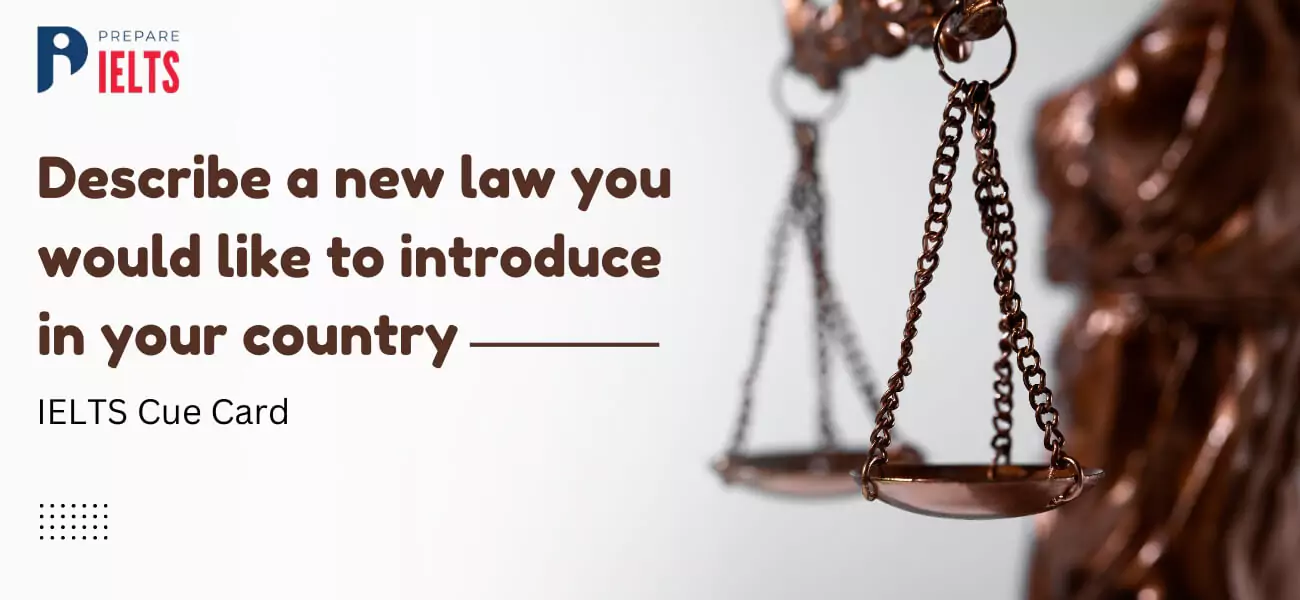
Overview
The IELTS reading passage is an important component of the International English Language Testing System (IELTS), which measures candidates' reading comprehension skills when applying to study or work in English-speaking countries. The reading test is divided into three portions to increase complexity and measures a variety of skills, such as skimming, scanning, and comprehensive understanding.
The passages in the third section of the IELTS speaking exam span a wide range of topics, including science and technology, history, arts, and culture, reflecting the many interests and backgrounds of test takers around the world. Candidates can improve their chances of passing the IELTS reading test and achieving high band scores by adopting effective reading strategies and understanding English text structures.
As a result, we have included a section on the topic "The Step Pyramid of Djoser" in this blog, as well as some relevant questions and answers for your practice. So, let us begin!
The Step Pyramid Of Djoser - IELTS Reading Passage
-
The pyramids are the most famous monuments of ancient Egypt and still hold enormous interest for people in the present day. These grand, impressive tributes to the memory of the Egyptian kings have become linked with the country even though other cultures, such as the Chinese and Mayan, also built pyramids. The evolution of the pyramid form has been written and argued about for centuries. However, there is no question that, as far as Egypt is concerned, it began with one monument to one king designed by one brilliant architect: the Step Pyramid of Djoser at Saqqara.
-
Djoser was the first king of the Third Dynasty of Egypt and the first to build in stone. Prior to Djoser’s reign, tombs were rectangular monuments made of dried clay brick, which covered underground passages where the deceased person was buried. For reasons which remain unclear, Djoser’s main official, whose name was Imhotep, conceived of building a taller, more impressive tomb for his king by stacking stone slabs on top of one another, progressively making them smaller, to form the shape now known as the Step Pyramid. Djoser is thought to have reigned for 19 years, but some historians and scholars attribute a much longer time for his rule, owing to the number and size of the monuments he built.
-
The Step Pyramid has been thoroughly examined and investigated over the last century, and it is now known that the building process went through many different stages. Historian Marc Van de Mieroop comments on this, writing, ‘Much experimentation was involved, which is especially clear in the construction of the pyramid in the centre of the complex. It had several plans … before it became the first Step Pyramid in history, piling six levels on top of one another … The weight of the enormous mass was a challenge for the builders, who placed the stones at an inward incline in order to prevent the monument from breaking up.’
-
When finally completed, the Step Pyramid rose 62 meters high and was the tallest structure of its time. The complex in which it was built was the size of a city in ancient Egypt and included a temple, courtyards, shrines, and living quarters for the priests. It covered a region of 16 hectares and was surrounded by a wall 10.5 meters high. The wall had 13 false doors cut into it, with only one true entrance cut into the southeast corner; the entire wall was then ringed by a trench 750 meters long and 40 meters wide. The false doors and the trench were incorporated into the complex to discourage unwanted visitors. If someone wished to enter, he or she would have needed to know in advance how to find the location of the true opening in the wall. Djoser was so proud of his accomplishment that he broke the tradition of having only his own name on the monument and had Imhotep’s name carved on it as well.
-
The burial chamber of the tomb, where the king’s body was laid to rest, was dug beneath the base of the pyramid, surrounded by a vast maze of long tunnels that had rooms off them to discourage robbers. One of the most mysterious discoveries found inside the pyramid was a large number of stone vessels. Over 40,000 of these vessels, of various forms and shapes, were discovered in storerooms off the pyramid’s underground passages. They are inscribed with the names of rulers from the First and Second Dynasties of Egypt and made from different kinds of stone. There is no agreement among scholars and archaeologists on why the vessels were placed in the tomb of Djoser or what they were supposed to represent. The archaeologist Jean-Philippe Lauer, who excavated most of the pyramid and complex, believes they were originally stored and then given a ‘proper burial’ by Djoser in his pyramid to honour his predecessors. There are other historians, however, who claim the vessels were dumped into the shafts as yet another attempt to prevent grave robbers from getting to the king’s burial chamber.
-
Unfortunately, all of the precautions and intricate design of the underground network did not prevent ancient robbers from finding a way in. Djoser’s grave goods, and even his body, were stolen at some point in the past, and all archaeologists found were a small number of his valuables overlooked by the thieves. There was enough left throughout the pyramid and its complex, however, to astonish and amaze the archaeologists who excavated it.
-
Egyptologist Miroslav Verner writes, ‘Few monuments hold a place in human history as significant as that of the Step Pyramid in Saqqara … It can be said without exaggeration that this pyramid complex constitutes a milestone in the evolution of monumental stone architecture in Egypt and in the world as a whole.’ The Step Pyramid was a revolutionary advance in architecture and became the archetype which all the other great pyramid builders of Egypt would follow.
Know more about: IELTS One Skill Retake- Retaking IELTS Exam 2024
The Step Pyramid Of Djoser - Questions and Answers
Questions 1-7
The Step of Pyramid Djoser Reading Passage has seven paragraphs: A-G.
Choose the correct heading for each paragraph from the list of headings below.
Write the correct number, i-ix, on your answer sheet for questions 1-7.
List of Headings
i. The areas and artefacts within the pyramid itself
ii. A difficult task for those involved
iii. A king who saved his people
iv. A single certainty among other less definite facts
v. An overview of the external buildings and areas
vi. A pyramid design that others copied
vii. An idea for changing the design of burial structures
viii. An incredible experience despite the few remains
ix. The answers to some unexpected questions
Answer 1: Paragraph A , iv
Explanation 1: "The evolution of the pyramid form has been written and argued about for centuries," it is noted. But there's no denying that the Step Pyramid of Djoser at Saqqara, a single monument to a single monarch created by a single, exceptionally talented architect, marked the beginning of Egypt.
Answer 2: Paragraph B, vii
Explanation 2: Next sentence: Before Djoser's rule, tombs were rectangular monuments covered with underground passageways containing the deceased person's remains. They were constructed of dried clay brick. Imhotep, Djoser's chief official, had the idea to construct a taller, more spectacular tomb for reasons that are yet unknown. This idea demonstrates the change in burial structure design.
Answer 3: Paragraph C, ii
Explanation 3: The builders faced a dilemma due to the great mass of the monument, so they set the stones at an inward slant to prevent them from splitting up.
Answer 4: Paragraph D, v
Explanation 4: The complex in which it was constructed comprised a temple, courtyards, shrines, and priests' quarters; it was the size of an ancient Egyptian city. An overview of all the places and buildings is included in this line.
Answer 5: Paragraph E, i
Explanation 5: The king's body was interred in a tomb that was excavated beneath the pyramid's base and encircled by an extensive network of tunnels that included chambers to deter would-be robbers. Numerous stone vessels were among the most enigmatic finds made inside the pyramid. In the storerooms of the pyramid's basement corridor, more than 40,000 of these containers in a variety of shapes and sizes were found.”
Answer 6: Paragraph F, viii
Explanation 6: The statement ‘Djoser’s grave goods, and even his body, were stolen at some point in the past, and all archaeologists found were a small number of his valuables overlooked by the thieves’. There was enough left throughout the pyramid and its complex, but the amount that remained inside it astounded the researchers who dug it up.
Answer 7: Paragraph G, vi
Explanation 7: It states, "The Step Pyramid was a revolutionary advance in architecture and became the archetype which all other great Egyptian pyramid builders would follow."
More Reading Topics: A Guide To Womenomics - IELTS Reading Answers
Questions 8-11
Complete the notes below.
Choose ONE WORD ONLY from the passage for each answer.
Write your answers to questions 8-11 on your answer sheet.
The Step Pyramid of Djoser
The complex that includes the Step Pyramid and its surroundings is considered to be as big as an Egyptian 21 __________ of the past. The area outside the pyramid included accommodation that was occupied by 22 __________, along with many other buildings and features.
A wall ran around the outside of the complex and a number of false entrances were built into this. In addition, a long 23 __________ encircled the wall. As a result, any visitors who had not been invited were cleverly prevented from entering the pyramid grounds unless they knew the 24 __________ of the real entrance.
Answer 8: City
Explanation 8: ‘The complex in which it was built was the size of a city in ancient Egypt and included a temple, courtyards, shrines, and living quarters for the priests’. In this line, you can see that the building is being compared to an Egyptian metropolis.
Answer 9: Priests
Explanation 9: The complex in which it was built was the size of a city in ancient Egypt and included a temple, courtyards, shrines, and living quarters for the priests. Therefore, Priests live in accommodations known as living quarters.
Answer 10: Trench
Explanation 10: Afterwards, a trench 40 meters wide and 750 meters long encircled the entire wall. Encircled is the definition of ringed. Thus, the wall was surrounded by the trench.
Answer 11: Location
Explanation 11: ‘If someone wished to enter, he or she would have needed to know in advance how to find the location of the true opening in the wall.’ This sentence makes it very clear that anyone wishing to approach the grounds of the pyramids must be aware of the location of the true entrance, which is a real opening in the wall.
Questions 12-13
Choose TWO letters, A-E.
Write the correct letters for questions 12 and 13 on your answer sheet.
Which TWO of the following points does the writer make about King Djoser?
A. Initially, he had to be persuaded to build it in stone rather than clay.
B. There is disagreement concerning the length of his reign.
C. He failed to appreciate Imhotep’s part in the design of the Step Pyramid.
D. A few of his possessions were still in his tomb when archaeologists found it.
E. He criticised the design and construction of other pyramids in Egypt.
Answer 12: B
Explanation 12: According to paragraph B, the passage has substantial debate over the duration of King Djoser's rule.
Answer 13: D
Explanation 13: According to paragraph F, when archaeologists found King Djoser's tomb, some of his belongings were still within.
More Reading Topics: Freebie Marketing - IELTS Reading Answers
Register Now, for a free Mock test - Join Today!
Conclusion
In conclusion, the IELTS reading passage represents a significant challenge and opportunity for candidates aiming to demonstrate their proficiency in English language skills. Test-takers can enhance their comprehension abilities and perform effectively on the exam through diligent practice, strategic approach, and exposure to diverse reading materials.
We hope you now know how easy or difficult it is to pass the IELTS Reading Test. But, if you are looking for more details or would like to prepare for IELTS, you can contact Prepare IELTS exam (PI) expert counsellors for further guidance. Our team of education experts is dedicated to providing you with the best test material and guidance to ace the IELTS exam. You can get a one-on-one counselling session and an IELTS online practice test via our platform. Contact us at info@prepareieltsexam.com or call us at +91 9773398388 for further queries.
Latest Blogs
-

IELTS Score for Canada: Minimum IELTS Requirement for Canada 2025
2024-09-27 18:24:14
-

IELTS Apology Letter for General Training: IELTS Writing Task 1
2024-09-25 16:38:03
-

Minimum IELTS Score for Australia: Student Visas, Universities, and PR in Australia
2024-09-23 18:09:51
-

Common IELTS Speaking Topics with Answers
2024-09-20 18:21:56
-

Describe a foreign culture that you like: IELTS speaking cue card
2024-09-18 16:14:11
-

Describe a Rainy Day IELTS Speaking cue card
2024-09-18 11:11:32
-

Describe a new law you would like to introduce in your country IELTS cue card
2024-09-13 17:17:46
-

Describe your favourite weather: IELTS cue card
2024-09-11 18:01:28
-

Describe an enjoyable journey by public transport: IELTS cue card
2024-09-09 18:05:45
-

Step-by-Step Guide to IELTS Registration in India for the Year 2024 & 2025
2024-09-07 12:59:51


